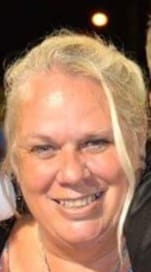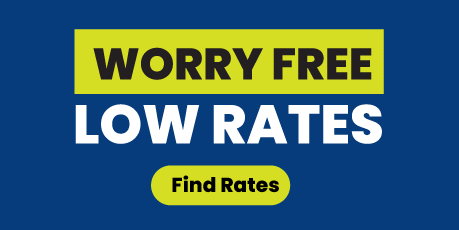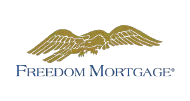What are Government Sponsored Enterprises (GSE)?

The United States Congress established special entities that are designed to create liquidity in certain markets within our economy that are vital to promoting opportunities for both consumers and lenders.
Two important sectors within the U.S. economy that require a stable, and consistent supply of money for consumers to borrow is student loans and residential mortgage finance.
In order to stabilize the supply of available funds to lend to consumers for both student loans and mortgage loans, the U.S. Congress created quasi-government sponsored enterprises that acts as a clearinghouse to buy and sell these loans, thus creating liquidity in their respective marketplace.
What Is a Government Sponsored Enterprise (GSE)?
A government-sponsored enterprise (GSE) is a quasi-governmental, privately held or publicly traded corporation that was created by Congress to improve the supply of credit within certain sectors of the of the United States’ economy.
These government sponsored enterprises provide a stabilized supply of money to banks and lenders for two important markets with in the United States economy, residential real estate finance and student loans financing.
The three main quasi-government sponsored enterprises are Fannie Mae, Freddie Mac and Sallie Mae. All three quasi-government sponsored enterprises perform independently of each other.
What does Sallie Mae do?
Sallie Mae is a publicly traded U.S. corporation that provides private student loans, education savings plans, and other various financial products and services to students and their families. Originally founded in 1972 as a government-sponsored entity (GSE), Sallie Mae was privatized in 2004 and has since become one of the largest providers of private student loans in the country.
How does Sallie Mae raise capital to lend for student loans?
Sallie Mae obtains the funds it lends through a variety of sources, including:
-
Deposits: Sallie Mae accepts deposits from customers who want to save for their own education or their children's education. These deposits are used to fund new loans.
-
Institutional Investors: Sallie Mae also raises funds through the sale of debt securities to institutional investors, such as banks, mutual funds, and pension funds. These investors purchase Sallie Mae's debt securities and provide the company with the funds it needs to make new loans.
-
Capital Markets: Sallie Mae also raises funds through the sale of asset-backed securities (ABS) in the capital markets. In this process, Sallie Mae bundles together a pool of loans, such as student loans, and sells bonds backed by those loans to investors. The investors receive the interest and principal payments from the loans, while Sallie Mae receives the cash from the bond sale, which it can use to make new loans.
-
Government Guarantees: Sallie Mae also participates in government-sponsored programs that provide guarantees or insurance for certain types of loans. For example, Sallie Mae is authorized to participate in the Federal Family Education Loan (FFEL) program, which provides a government guarantee on certain types of student loans. This allows Sallie Mae to raise funds at a lower cost and offer more attractive loan terms to borrowers.
What does Fannie Mae and Freddie Mac do?
Fannie Mae and Freddie Mac are two government-sponsored enterprises (GSEs) that play a significant role in the U.S. housing market. They were created by Congress with the aim of increasing the availability and affordability of mortgage credit in the private issued mortgage market commonly referred to as Conventional and conforming loans.
Fannie Mae (officially known as the Federal National Mortgage Association) and Freddie Mac (officially known as the Federal Home Loan Mortgage Corporation) have a similar business model. Fannie Mae and Freddie Mac buy mortgage loans from lenders, bundle them together, and sell them to investors as mortgage-backed securities (MBS). This process is known as securitization.
By buying mortgages from lenders, Fannie Mae and Freddie Mac provide liquidity to the housing market, enabling lenders to make new loans. They also help to set standards for mortgage underwriting and provide guarantees on the mortgages they purchase.
By increasing the supply of funds for mortgage loans, consumers can obtain mortgage loans with lower down payments, lower interest rates and standardized underwriting guidelines that are within reach for the average consumer in the United States.
This helps to reduce the risk for investors who buy the MBS and promotes the flow of capital into the whole housing finance market.
In addition to their securitization activities, Fannie Mae and Freddie Mac also have other functions:
-
Fannie Mae provides financing for multifamily housing (apartment buildings with five or more units), which helps to create more affordable rental housing.
-
Freddie Mac provides funding for affordable homeownership initiatives, such as down payment assistance programs and homeownership education.
-
Both Fannie Mae and Freddie Mac work to promote sustainable homeownership and support initiatives to prevent foreclosures.
While Fannie Mae and Freddie Mac are government-sponsored enterprises, they are publicly traded companies and are not directly operated by the federal government. However, they are subject to government oversight and regulation.
Fannie Mae and Freddie Mac do not originate mortgage loans
How does Fannie Mae and Freddie Mac raise capital to increase the supply of money for mortgage lending?
Fannie Mae and Freddie Mac raise money primarily by selling mortgage-backed securities (MBS) to investors. Here's how the process works:
-
Purchasing mortgages: Fannie Mae and Freddie Mac purchase mortgages from lenders, which they then package together into pools of similar loans.
-
Securitization: Fannie Mae and Freddie Mac use these mortgage pools to create mortgage-backed securities (MBS), which are debt securities that represent an interest in the cash flows from a pool of mortgage loans. These MBS are sold to investors in the capital markets.
-
Guaranteeing MBS: Fannie Mae and Freddie Mac also guarantee the timely payment of principal and interest on their MBS. This means that if borrowers default on their mortgages, Fannie Mae and Freddie Mac will step in to cover the losses. This guarantee provides investors with a measure of safety and helps to make the MBS more attractive to investors.
-
Selling MBS: Once the MBS have been issued and guaranteed, they are sold to investors such as pension funds, insurance companies, and other institutional investors. The proceeds from the sale of the MBS provide Fannie Mae and Freddie Mac with the funds they need to purchase more mortgages from lenders, and the cycle begins anew.
In addition to selling MBS, Fannie Mae and Freddie Mac also borrow money directly from the capital markets by issuing their own debt securities, such as bonds and notes. They also raise funds by accepting deposits from their customers and through other funding sources, such as lines of credit from banks.
GSEs role in the Residential Real Estate Market
In an effort to encourage home ownership, Congress established the Federal Home Loan Bank (FHLB) system in 1932 as a Government-Sponsored Enterprise for the mortgage industry. It was created with the purpose of revitalizing housing finance system and stimulating housing markets around the country.
Two of the most prominent Government Sponsored Enterprises (GSEs) in today's mortgage industry are Fannie Mae and Freddie Mac.
How does Fannie Mae and Freddie Mac help consumers?
GSEs, like Fannie Mae and Freddie Mac, do not issue mortgage loans directly. Fannie Mae and Freddie Mac provide third-party loan options and purchase assurances in the secondary mortgage market to give lenders a constant supply of funds so lenders can originate more mortgage loans.
Fannie Mae and Freddie Mac increase the supply of capital to banks; therefore, banks can issue more loans. When supply is high, the prices drop. This means for homeowners and home buyers alike, the endless supply of available money to lend lowers borrowing costs and the interest rates for consumers.
In addition, Fannie Mae and Freddie Mac, create standardized mortgage underwriting guidelines and special loan programs that offer lower down payments like HomePossible and HomeReady
Both HomePossible by Freddie Mac and HomeReady by Fannie Mae provide lower down payments and lower interest rates.
Where are mortgage bonds sold? GSE Bonds Vs. Treasury Bonds
Although private companies and the U.S. Treasury both issue bonds in the mortgage bond market, there are some distinct characteristics that set them apart from one another.
The main difference between a GSE bond from Fannie Mae, Freddie Mac and Sallie Mae and a U.S. Treasury bond is that the U.S. Treasury bond is backed by the full faith and credit of the American government.
The full faith and credit of the government allows them to honor their commitments towards investors, ensuring that interest payments and principal are paid in a timely manner when bonds reach maturity.
GSE bonds come with both the prospect of credit and default risk, but reward investors for that risk with higher yields than those associated with traditional U.S. Treasury bonds.
Government-Sponsored Enterprises
Here is a list of government sponsored enterprises and there dates of origin and service provided.
Student Loan GSEs
-
Sallie Mae: From its origin as a loan collector for the U.S. Department of Education in 1972, The Student Loan Marketing Association (Sallie Mae) has since become an independent servicer of student debt exclusively servicing private loans since 2004.
Mortgage GSEs
-
Federal Home Loan Banks: Established in 1932 and composed of numerous banks and lenders, the Federal Home Loan Banks were the first Government-Sponsored Enterprises to be based on mortgage loans. Unmatched by any other GSEs, these organizations are exclusively authorized to issue mortgages directly.
-
Federal National Mortgage Association (FNMA or Fannie Mae): Established in 1938, this GSE facilitates mortgage funding by purchasing them from large commercial banks and reselling to investors.
-
Federal Home Loan Mortgage Corporation (FHLMC or Freddie Mac): Established in 1970, this GSE (Government Sponsored Entity) is similar to Fannie Mae but has the additional purpose of buying mortgages from smaller banks and other lending sources.
Agricultural GSEs
-
Federal Agricultural Mortgage Corporation (FAMC or Farmer Mac): Signed into law by Congress in 1987, this GSE provides assurance and financial security to agricultural investors that their investments will be repaid.
-
Farm Credit System: In 1916, the inaugural Government Sponsored Enterprise (GSE) was developed to empower farmers and ranchers with access to credit so that America's agricultural sector would remain ambitious. This GSE is comprised of a network of collaborative banks and associations striving towards this collective mission.
Summary of government sponsored enterprises
Buying a home becomes an almost impossible task without the help of government-sponsored enterprises, especially if you have limited income or limited funds for down payments. Luckily for us, these GSEs and investors support our nation's mortgage market with consistent liquidity, credit flow and stability. To fully comprehend how mortgages are bought and sold in the U.S., take some time to explore more about the secondary mortgage market and its effects on homeownership today!







